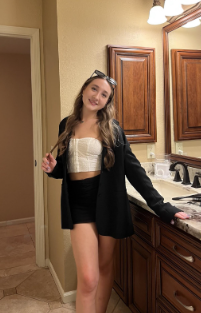Welcome to the Student Life section in Wolf’s Print!
Here you can expect to find articles that concern mental health in and out of our school environment, in addition to tips and tricks to help you succeed academically this school year. Mental health topics that we plan to cover include common mental disorders among today’s adolescents to give insight and information in order to spread awareness, as well as tips to take care of your mental health in and out of school. As for academics, we plan to post articles that are specific and informative to different types of learners, and provide help for when it comes to time management and study habits. We will also be interviewing teachers that teach a wide variety of subjects to get their first hand opinion on what study methods they believe are the most effective for that subject. The Student Life section is new to Wolf’s Print this year, and our goal is to help students balance their mental health with school’s often overwhelming academics through journalism.
Introducing … Learning Chronicles!
This series will include multiple different articles that will talk about common and specific types of learners, as well as obstacles that some students face when it comes to learning. Here you will find information on what makes us different types of learners and what role psychological science plays in this, as well as study methods that work best with specific types of learners.
The Learning Chronicles: Visual Learners
Visual learners are people who retain information more effectively through images, diagrams, patterns, and other visual aids.Have you ever wondered if you are a visual learner? Well luckily for you, thanks to modern day science, researchers have observed visual learners and discerned certain characteristics and traits commonly seen among them.
These characteristics often include:
- Preferring organized and visually appealing material
- Good observation skills and visual memory
- Good mental imagery
- Difficulty with spoken directions
- Easily distracted by sounds
- Wandering thoughts and decreased focus during lectures
- Good handwriting
- Expression through creativity
So what does it mean to be a visual learner in scientific terms?
Our brain consists of multiple different lobes that each have their own unique functions. In a visual learner’s brain, activity during learning is more concentrated in areas that are responsible for processing visual information. In this case, that would be the occipital lobe which is located at the back of the brain. Visual learners tend to use mental imagery to organize and remember information, this taps into the brain’s ability to process patterns, colors, or other visual stimuli which engages the right hemisphere of the brain that is linked to creativity and visualization.
What are the best ways to study as a visual learner?
There are so many study and learning methods that are out there, and it is often hard to tell which one works best for you. So, if you suspect that you may be a visual learner, here are some effective study methods that might aid you in your academics.
- Interactive Whiteboard: Taking notes may be confusing or simply not effective for visual learners because of the lack of visual representation. The interactive whiteboard method is great for reviewing notes or concepts but in a visual approach. Re-write your preferred study material on a whiteboard with colorful markers and use arrows or boxes to group together or connect concepts. Seeing your notes grouped together and color coated in a way that makes sense to you can be extremely helpful in active recall. Don’t have a whiteboard? You can also use a window mirror, or any other surface that you can use whiteboard markers on.
- Animated Crash Course Videos: It can often be hard to visualize information that you have written down in your notes, or information that a teacher gives during lectures. Crash course videos, specifically animated ones, can help you visualize the information which will help you obtain knowledge in the long run. Some helpful crash course channels include: Crash Course, Ted-Ed, Khan Academy, Simple History, Mr. Sinn, and Heimler’s History.
- Flashcards With Images: Yes, flashcards are a well known study technique, however, it is well known for a reason. Studying with flashcards, especially over a period of time, significantly improves your memory and learning capacity. For visual learners, flashcards that are associated with a certain color, or include images are particularly helpful.-
Stay tuned for the next article of The Learning Chronicles!



